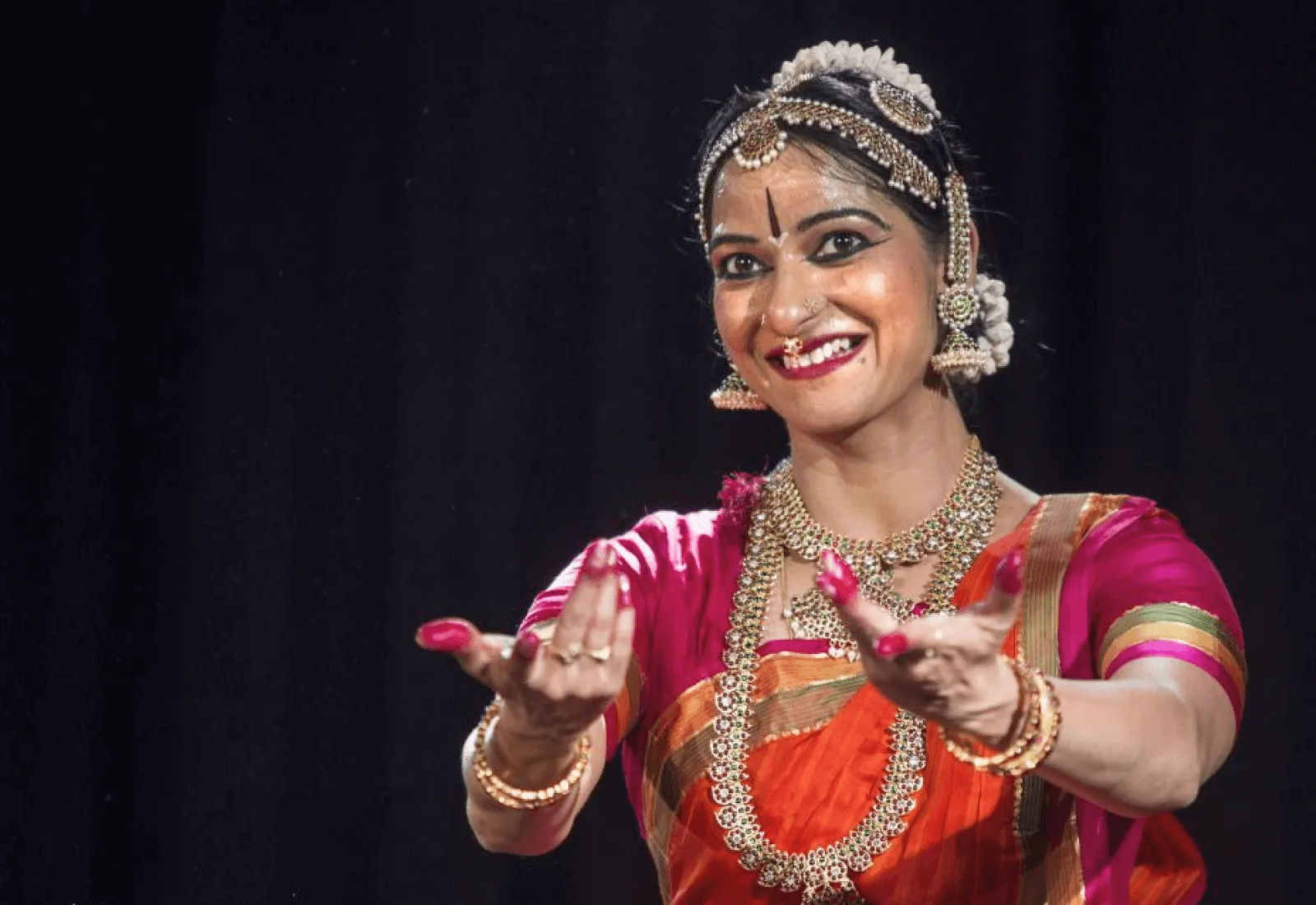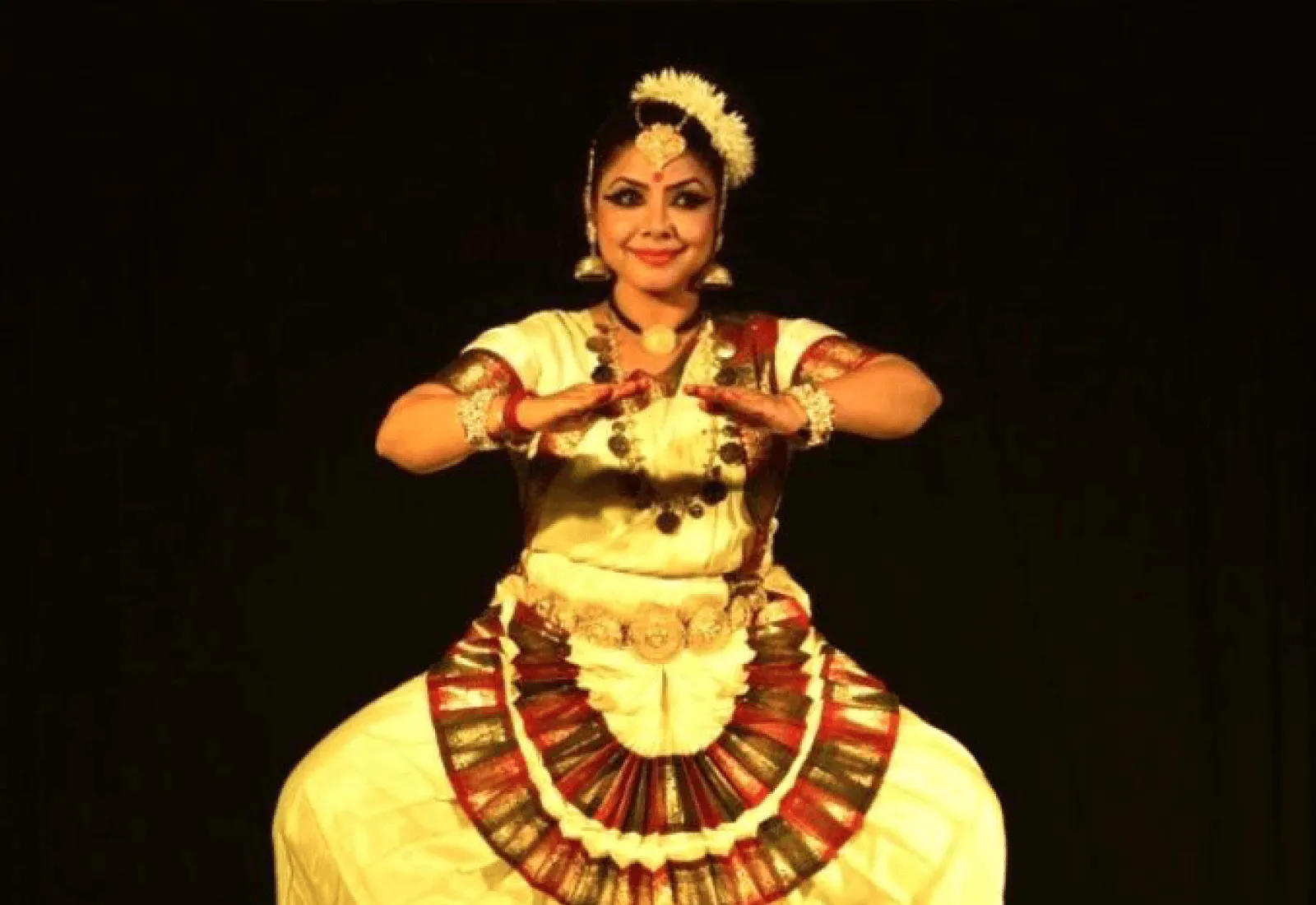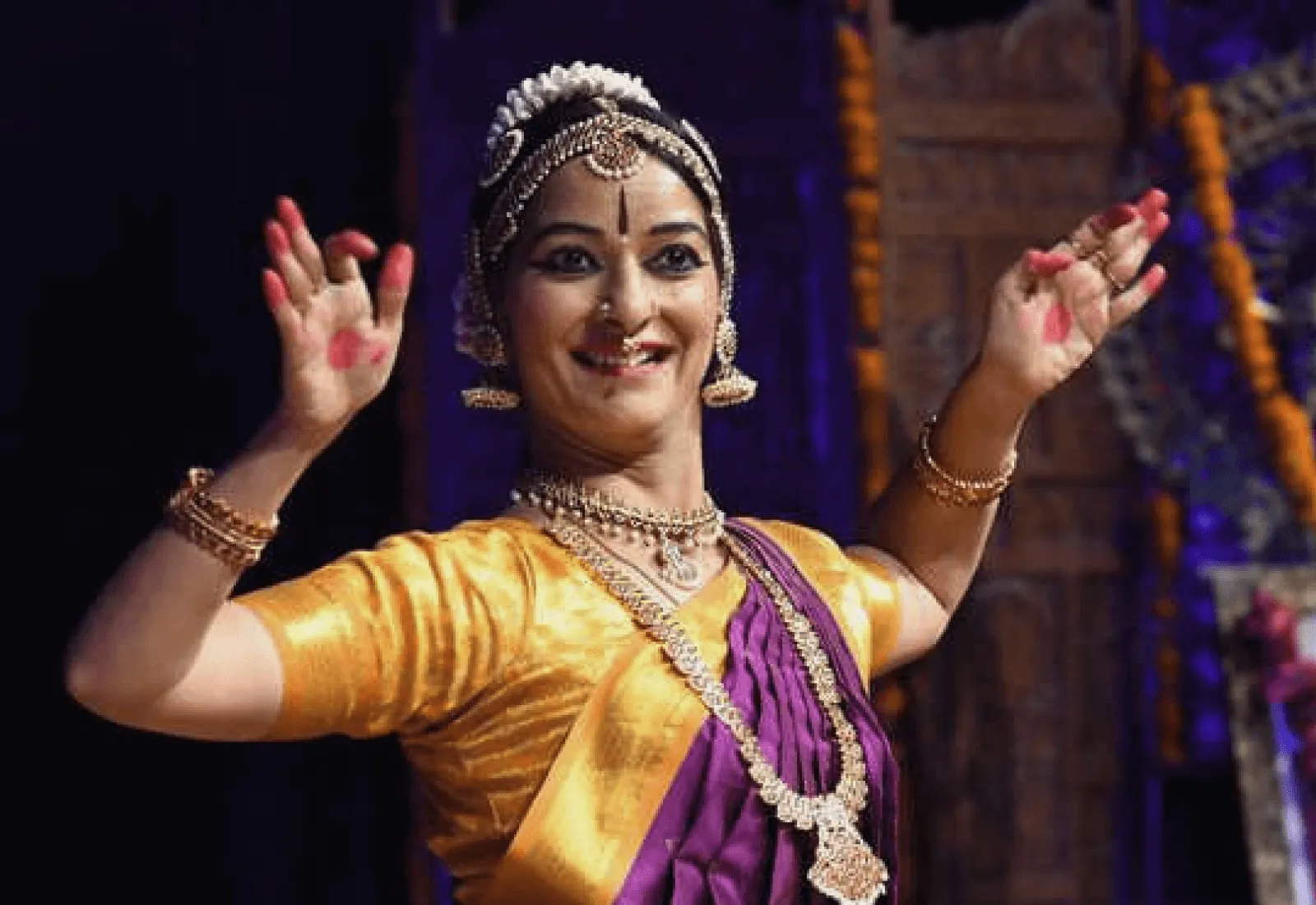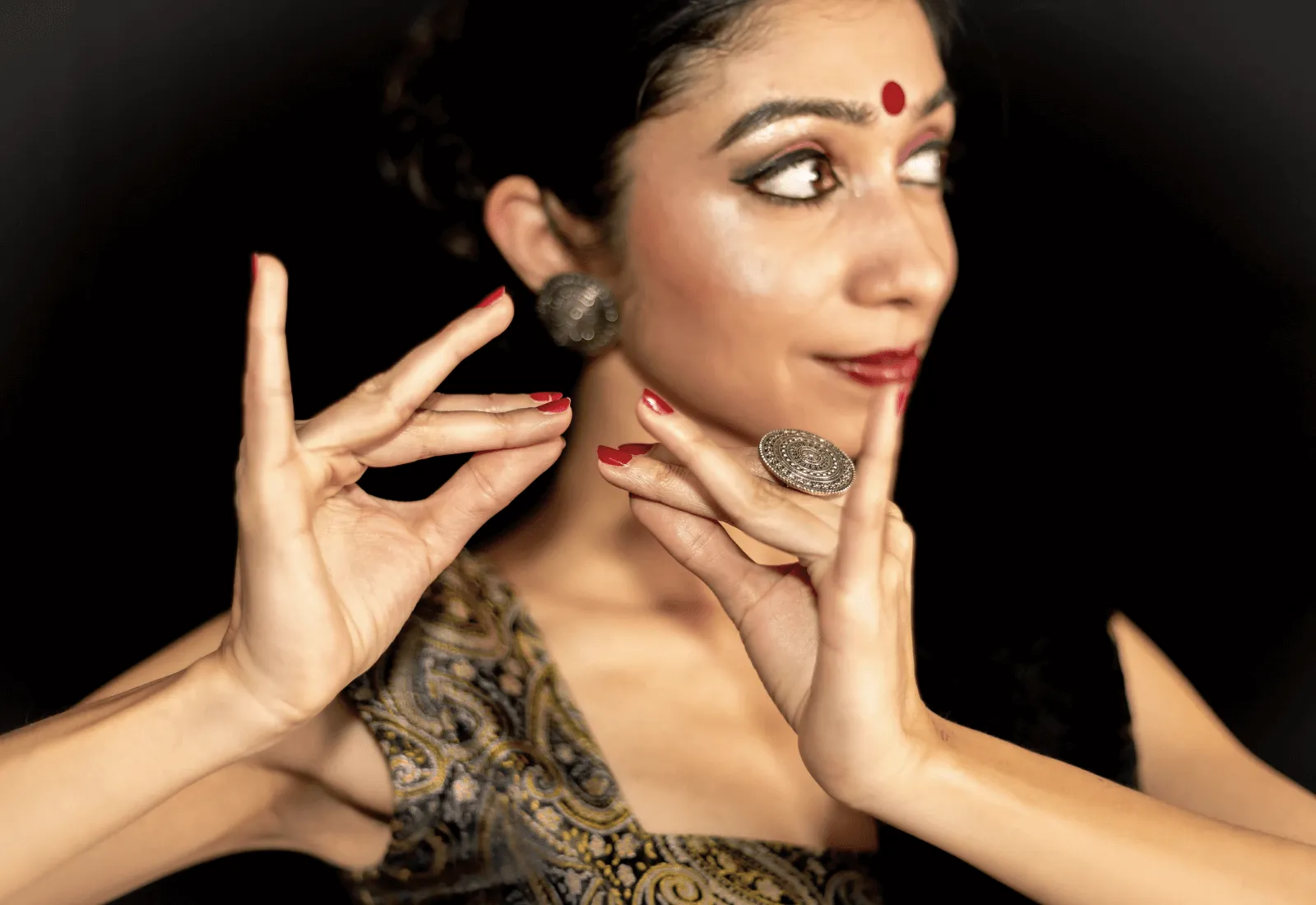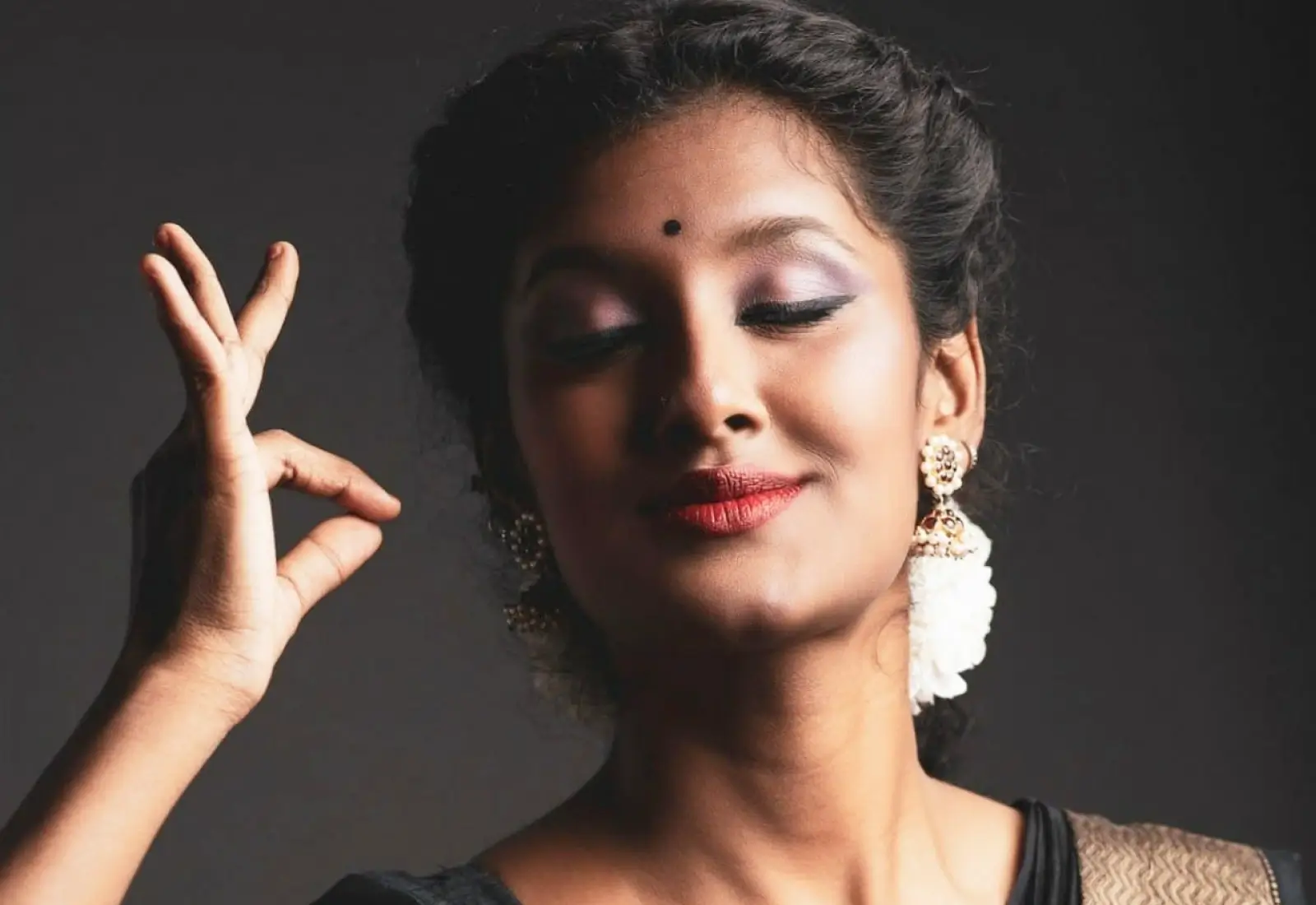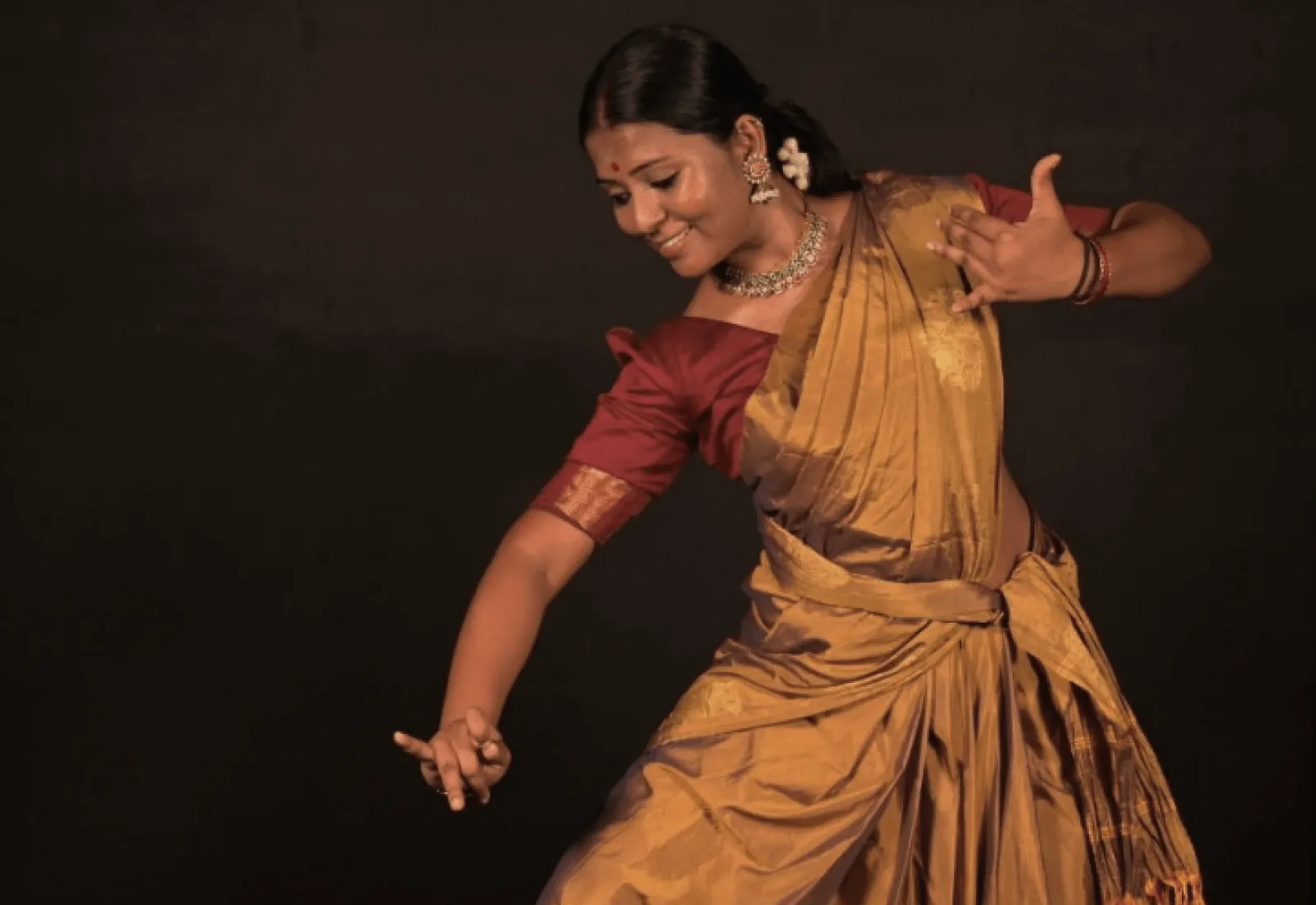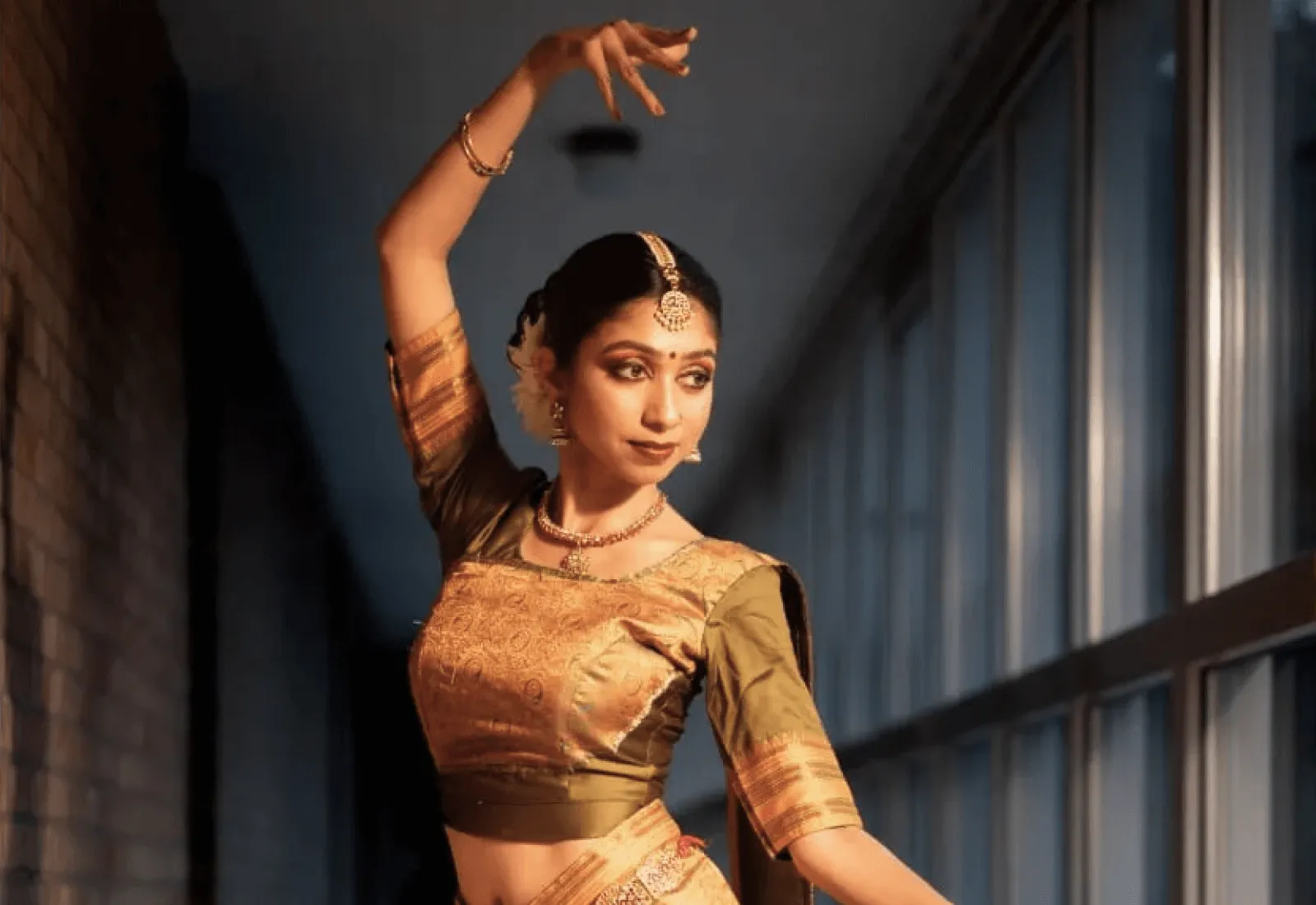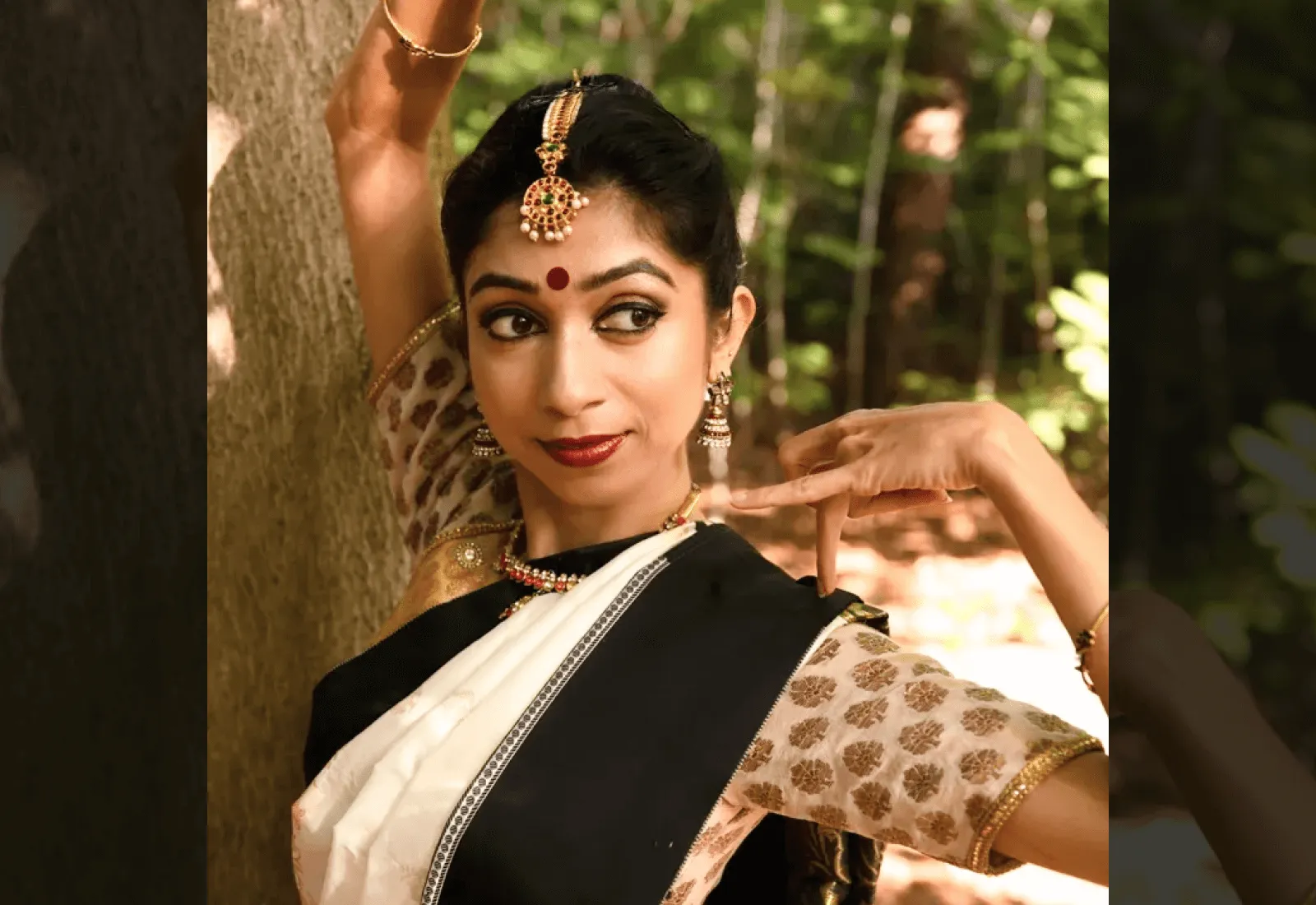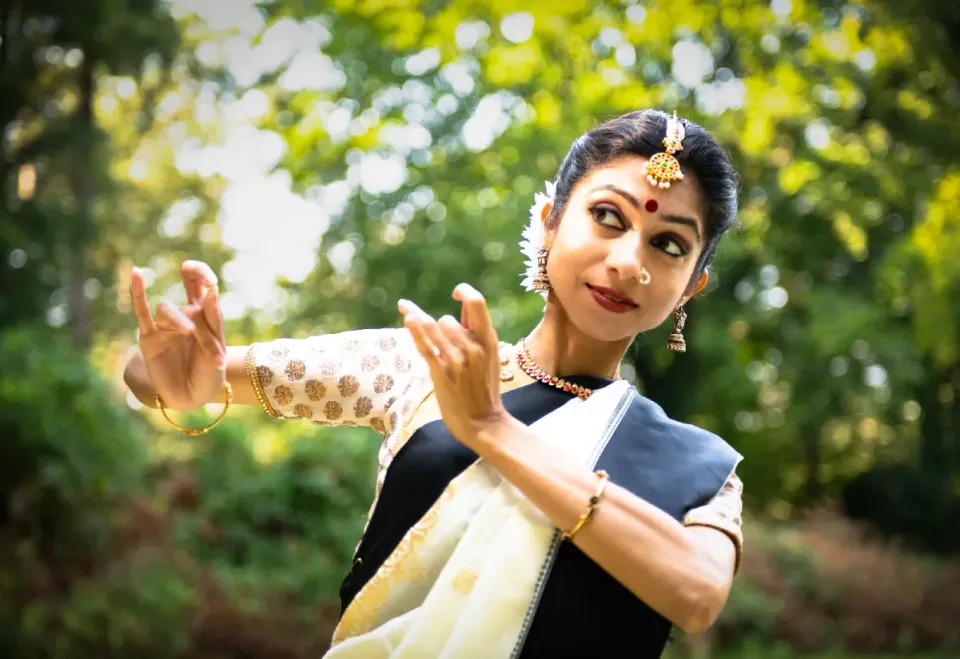13 Bharatanatyam Mudras With Meaning
It is through Mudras, the emotions get conveyed to the Divine! Bharatanatyam Mudras are a sign language through which the performer connects with the Rasikas or its audience.
"Yatho hasta thatho drishti, yatho drishti thatho manah..
yatho manah thatho drishti, yatho drishti thatho rasa"
The powerful quote finds its mention in the Natya Sastra, an ancient Sanskrit treatise on the performing arts. It literally translates to,
Where the hands are, the eyes follow, where the eyes are, the mind follows;
Where the mind goes, the expression follows, and where there is an expression, mood/ Navarasa is evoked.
Every Indian classical dance of India is inspired by the quote mentioned above. The Bharatanatyam hastha mudras or Bharatanatyam hand guestures are vital aspects of the art form. They are intense enough to convey deeper meanings and powerful enough to evoke a myriad of emotions in their audiences. There are also mudras that have a very limited meaning. The approach while mastering these mudras should be to understand their aesthetic aspect which is to communicate than to perform them with rigid correctness!
I have covered thirteen bharatanatyam mudras with meaning in this blog.
13 Bharatanatyam Mudras (Bharatanatyam Hand Gestures) Names
1. Pataka Mudra
2. Tripataka Mudra
3. Mayura Mudra
4. Ardha Chandra Mudra
5. Alpadma Mudra
6. Trishula Mudra
7. Arala Mudra
8. Anjali Mudra
9. Kapota Mudra
10. Karkata Mudra
11. Swastika Mudra
12. Pushpaputa Mudra
13. Utsanga Mudra
Bharatanatyam hand mudras are broadly classified into Asamyukta hasta mudras or single-hand mudras and Samyukta hasta mudras or double-hand gestures.
There are 28 Asamyukta hastha mudras and 24 Samyukta hastha mudras as mentioned in scriptures like Natyashastra and Abhinaya Darpana.
Asamyukta Hasta Mudras or The Single-Hand Mudras
Some of the most popular Asamyuta hasta mudras or single-hand mudras are:
1. Pataka:
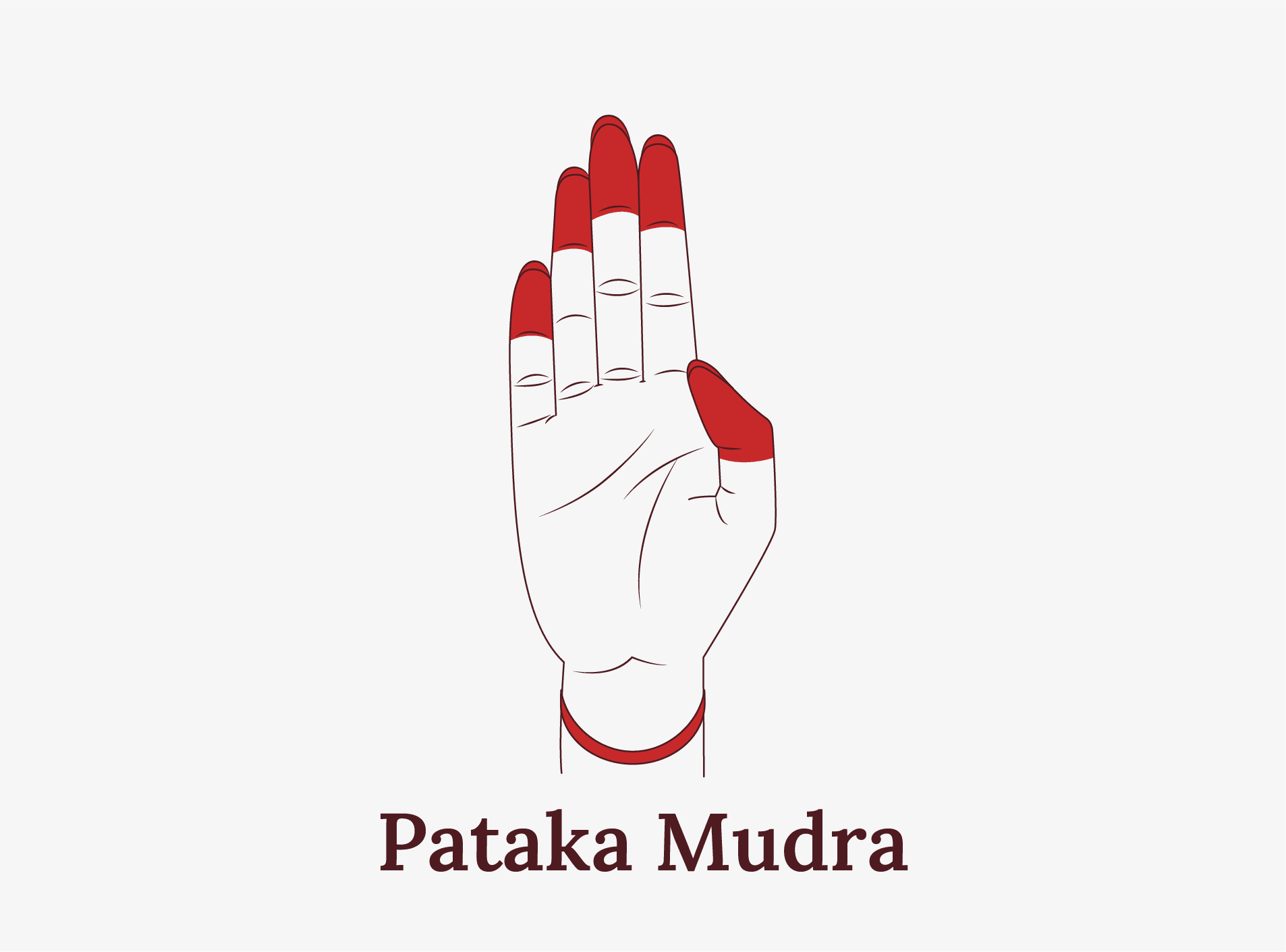 It literally means a ‘Flag’. Pataka is the most basic hand gesture and the first to be taught to absolute beginners. The hand is upright (with a slight arch), the fingers are straight, and the thumb is slightly bent. There are no gaps between the fingers. The simple gesture depicts the action of blessing, to depict the sky, air, or water, and also to indicate to stop.
It literally means a ‘Flag’. Pataka is the most basic hand gesture and the first to be taught to absolute beginners. The hand is upright (with a slight arch), the fingers are straight, and the thumb is slightly bent. There are no gaps between the fingers. The simple gesture depicts the action of blessing, to depict the sky, air, or water, and also to indicate to stop.
2. Tripataka
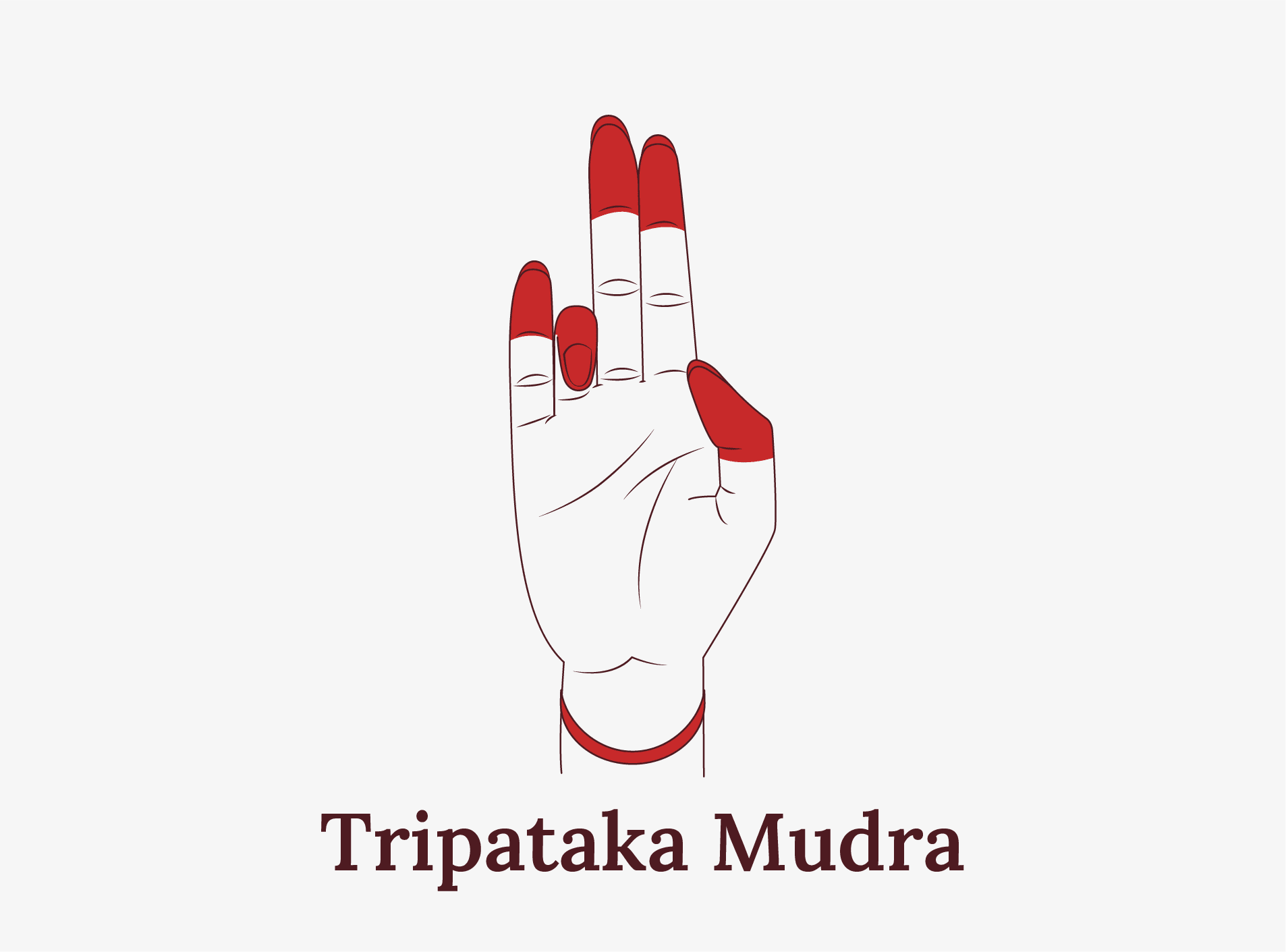 Same as in the Pataka Mudra the hand is held upright, but the third finger is bent in this mudra. As the name suggests the Tripataka, is a variation of the Pataka mudra using three fingers. It portrays the action of applying Tilak and is also used to depict the king or crown.
Same as in the Pataka Mudra the hand is held upright, but the third finger is bent in this mudra. As the name suggests the Tripataka, is a variation of the Pataka mudra using three fingers. It portrays the action of applying Tilak and is also used to depict the king or crown.
3. Mayura
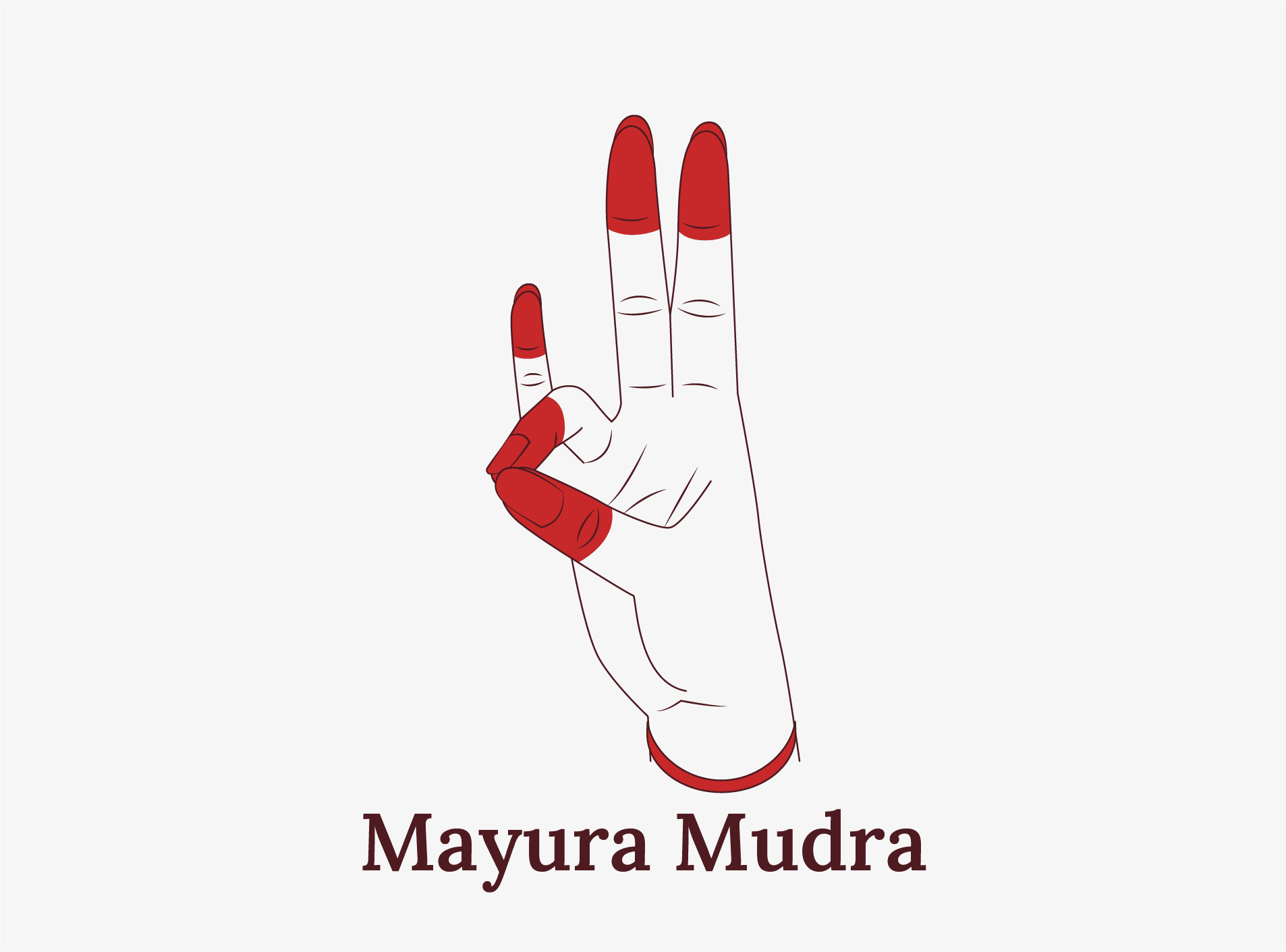 The term Mayura literally translates to a peacock. When the ring finger touches the thumb, the mudra portrays a peacock. The index, the middle, and the little finger remain extended. Besides portraying peacocks, this gesture is also used to portray a bird’s neck, Krishna’s feathers, and even creepers. This mudra usually goes along with intricate footwork!
The term Mayura literally translates to a peacock. When the ring finger touches the thumb, the mudra portrays a peacock. The index, the middle, and the little finger remain extended. Besides portraying peacocks, this gesture is also used to portray a bird’s neck, Krishna’s feathers, and even creepers. This mudra usually goes along with intricate footwork!
4. Ardha Chandra
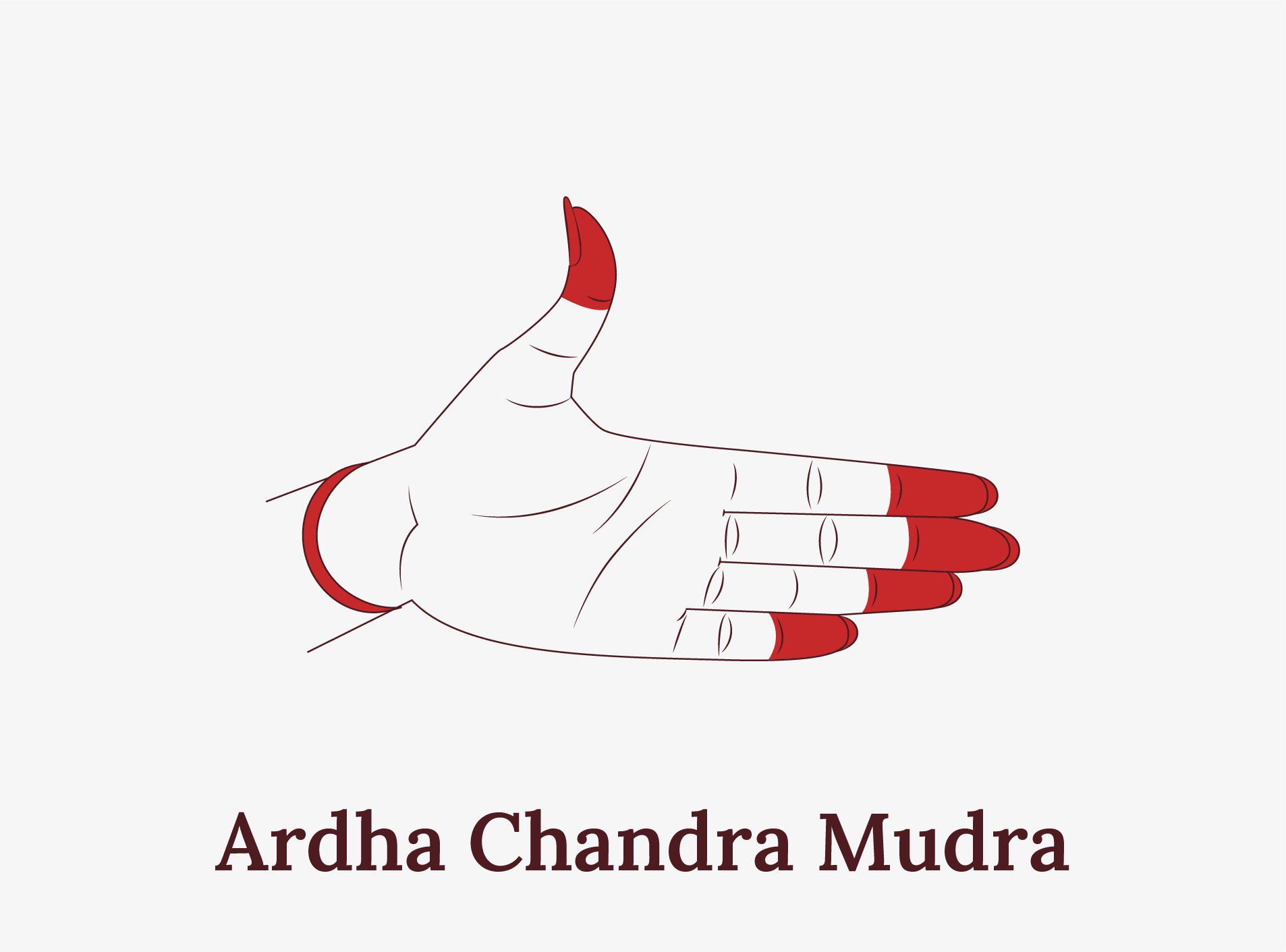 The literal meaning of Ardha Chandra is the half moon. Very similar to the Pataka mudra, the main variation between the two gestures is that in Ardha Chandra, the thumb is held straight in line with the fingers. The gesture is complete when the hand is at a horizontal angle. Besides depicting a half moon, the mudra can also portray a spear, throat, etc.
The literal meaning of Ardha Chandra is the half moon. Very similar to the Pataka mudra, the main variation between the two gestures is that in Ardha Chandra, the thumb is held straight in line with the fingers. The gesture is complete when the hand is at a horizontal angle. Besides depicting a half moon, the mudra can also portray a spear, throat, etc.
5. Alapadma
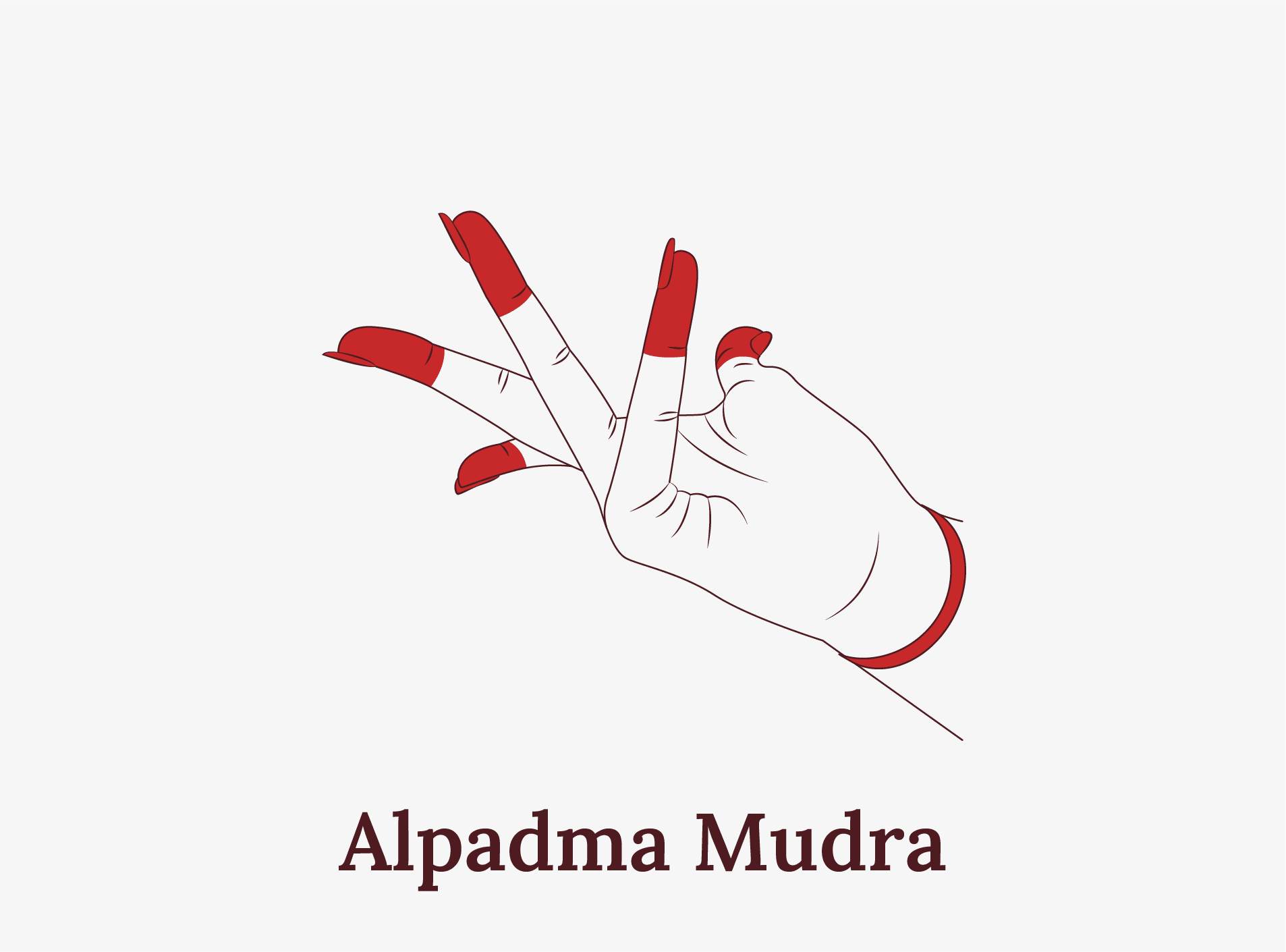 The lotus mudra depicts the glory of a blooming lotus. The thumb and the fingers are stretched and curled in a way to form the petals of the lotus. The mudra depicts the productive energies that flow within the spiritual and the physical realms. It represents creation, romance, and wisdom.
The lotus mudra depicts the glory of a blooming lotus. The thumb and the fingers are stretched and curled in a way to form the petals of the lotus. The mudra depicts the productive energies that flow within the spiritual and the physical realms. It represents creation, romance, and wisdom.
6. Trishula
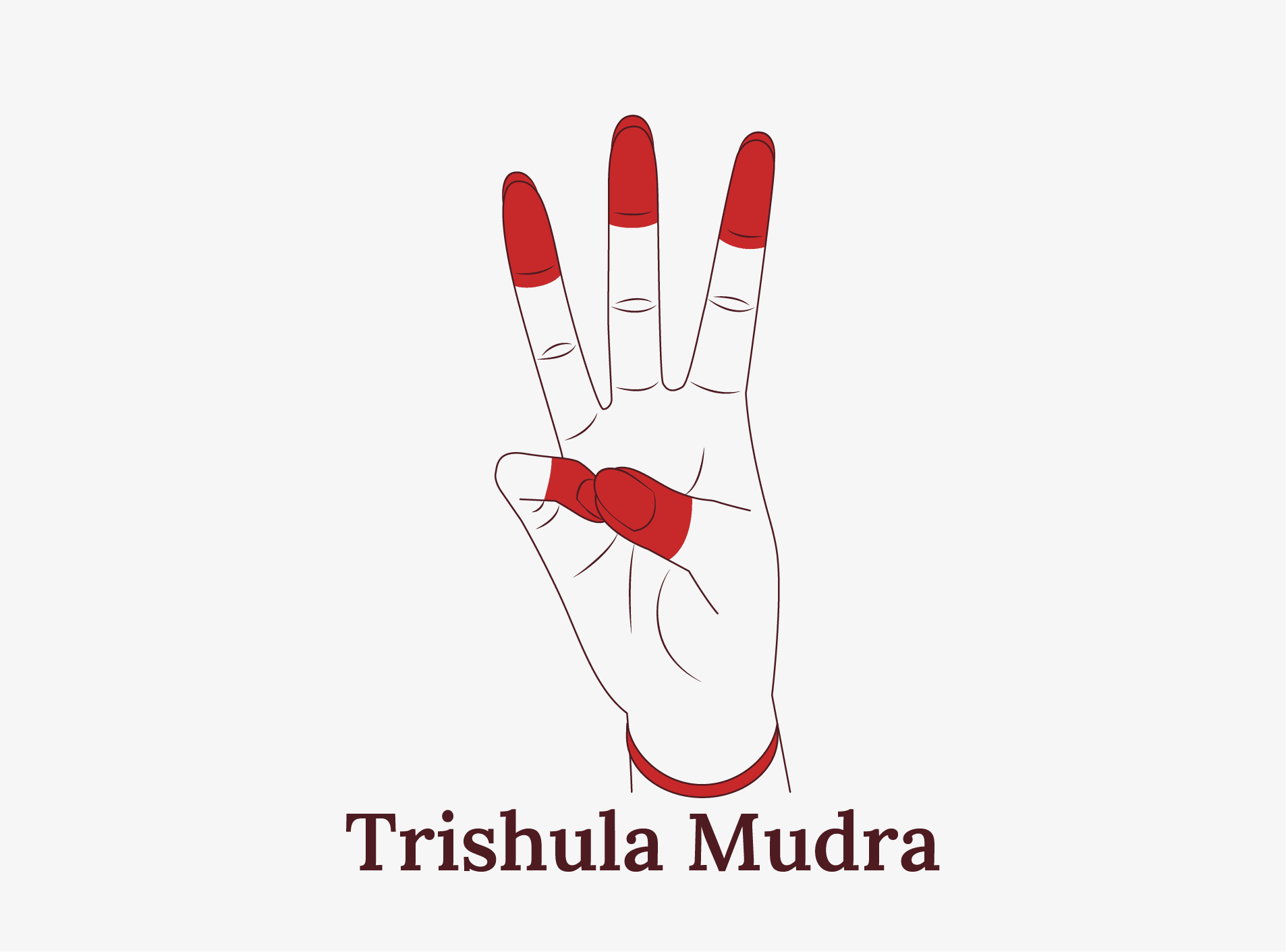 ‘Tri’ means ‘three’ and ‘Shula’ means ‘spear’. Trishula is the most common ‘Astra’ or ‘weapon’, of the deities, as mentioned in the Indian scriptures. The mudra is achieved when the little finger meets the thumb, and the remaining three fingers are held upright. The Trishula mudra is a depiction of power, that exhibits the triumph of good over evil. It also represents Lord Shiva, the bearer of the Astra.
‘Tri’ means ‘three’ and ‘Shula’ means ‘spear’. Trishula is the most common ‘Astra’ or ‘weapon’, of the deities, as mentioned in the Indian scriptures. The mudra is achieved when the little finger meets the thumb, and the remaining three fingers are held upright. The Trishula mudra is a depiction of power, that exhibits the triumph of good over evil. It also represents Lord Shiva, the bearer of the Astra.
7. Arala
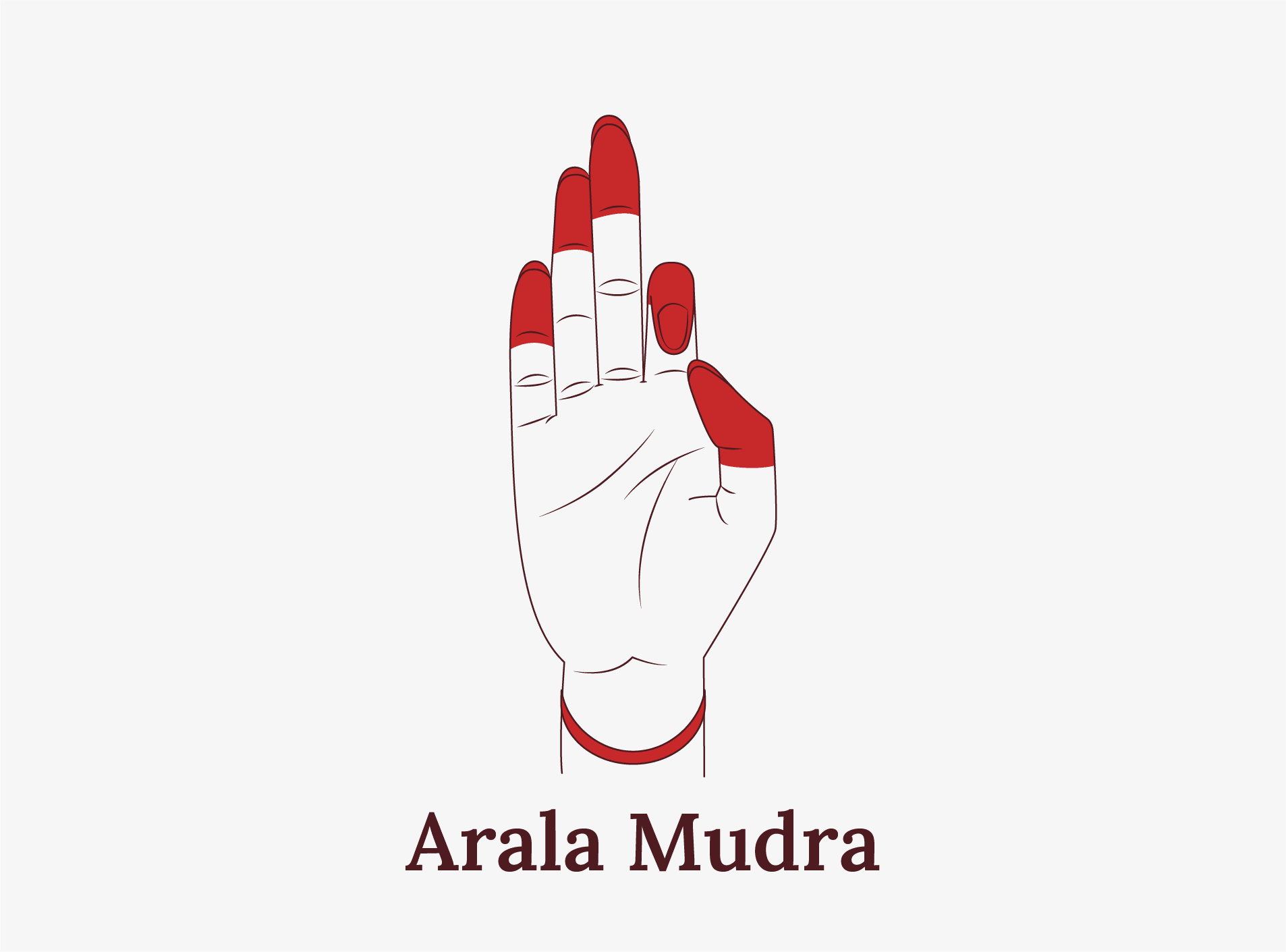 The mudra is achieved when following the Pataka mudra, the index finger and the thumb is bent. The Arala mudra portrays the action of drinking an elixir or poison and can also portray a violent wind.
The mudra is achieved when following the Pataka mudra, the index finger and the thumb is bent. The Arala mudra portrays the action of drinking an elixir or poison and can also portray a violent wind.
Samyukta Hasta Mudras or The Double-Hand Mudras
Some of the most popular Samyuta hasta mudras or double-hand mudras are:
8. Anjali Mudra
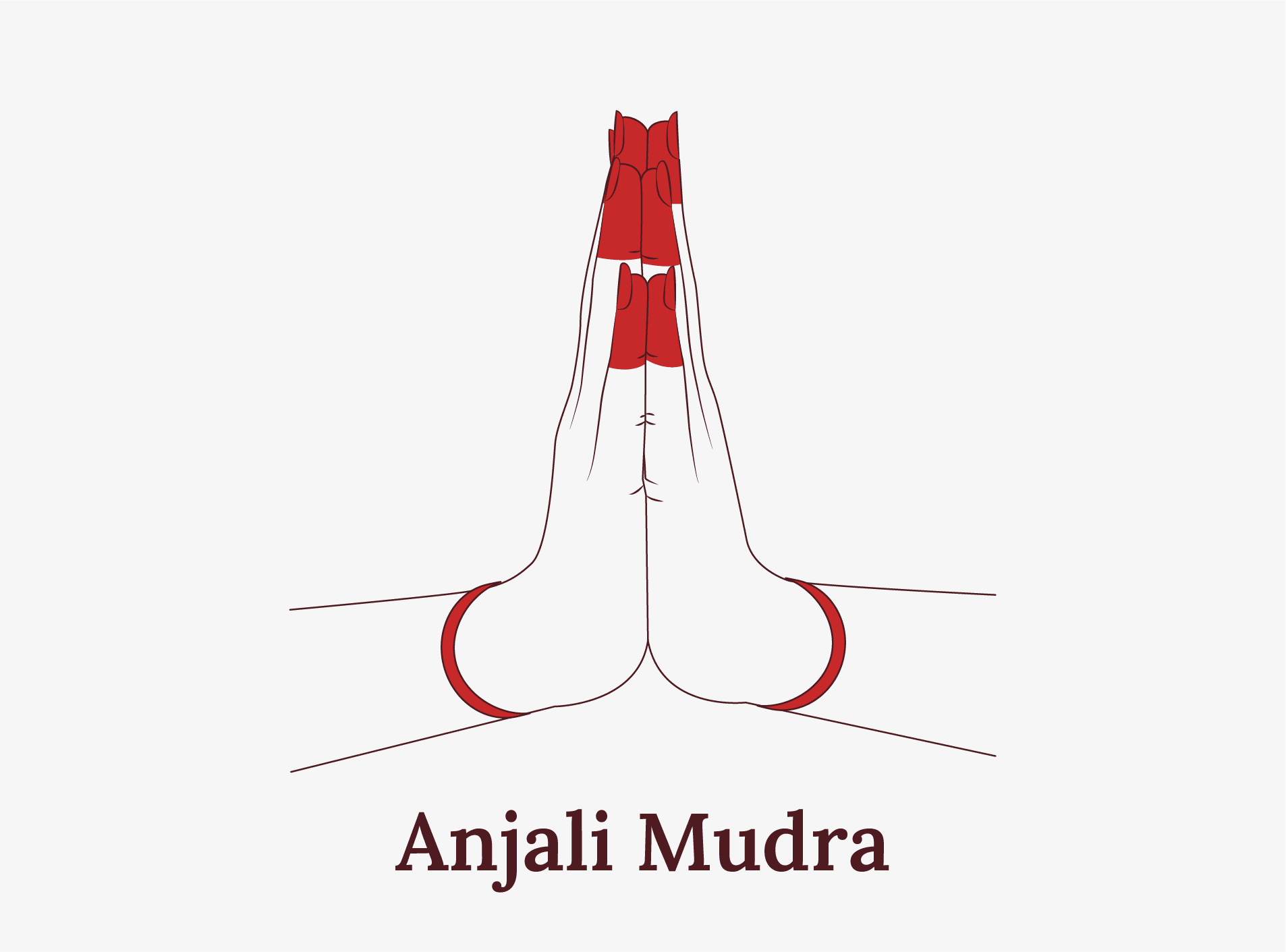 In this very basic mudra you need to join both your palms to get the Anjali Mudra. In Indian culture, people often use this familiar gesture to greet individuals and welcome them.
In this very basic mudra you need to join both your palms to get the Anjali Mudra. In Indian culture, people often use this familiar gesture to greet individuals and welcome them.
9. Kapota Mudra
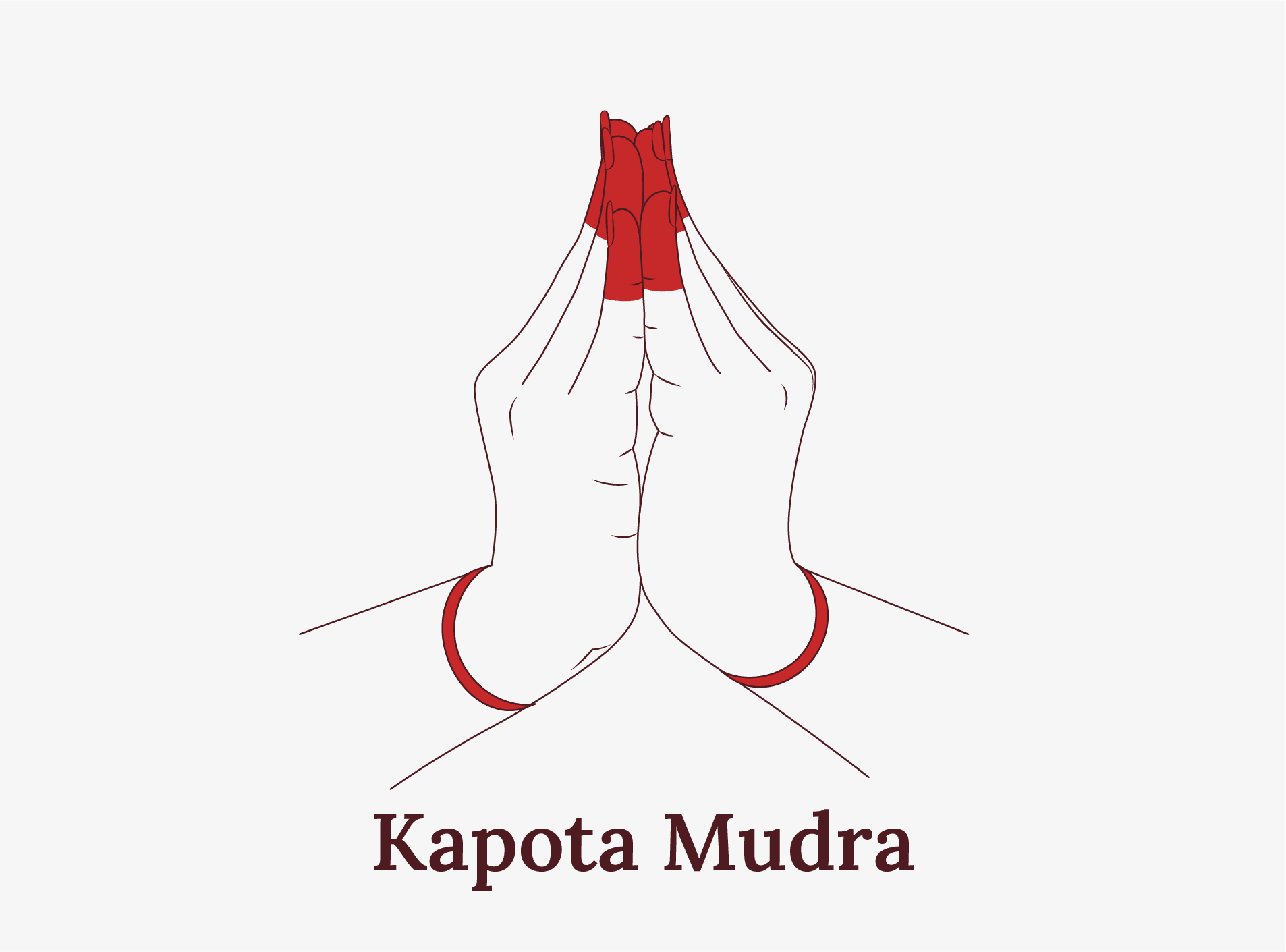 When you slightly bulge your Anjali mudra at the knuckles, you will be performing the Kapota mudra. Here, the centre is cupped! This mudra is a mark of obedience and acceptance and exhibits respectful salutations. The mudra is held while initiating a conversation with a Guru or teacher.
When you slightly bulge your Anjali mudra at the knuckles, you will be performing the Kapota mudra. Here, the centre is cupped! This mudra is a mark of obedience and acceptance and exhibits respectful salutations. The mudra is held while initiating a conversation with a Guru or teacher.
10. Karkata Mudra
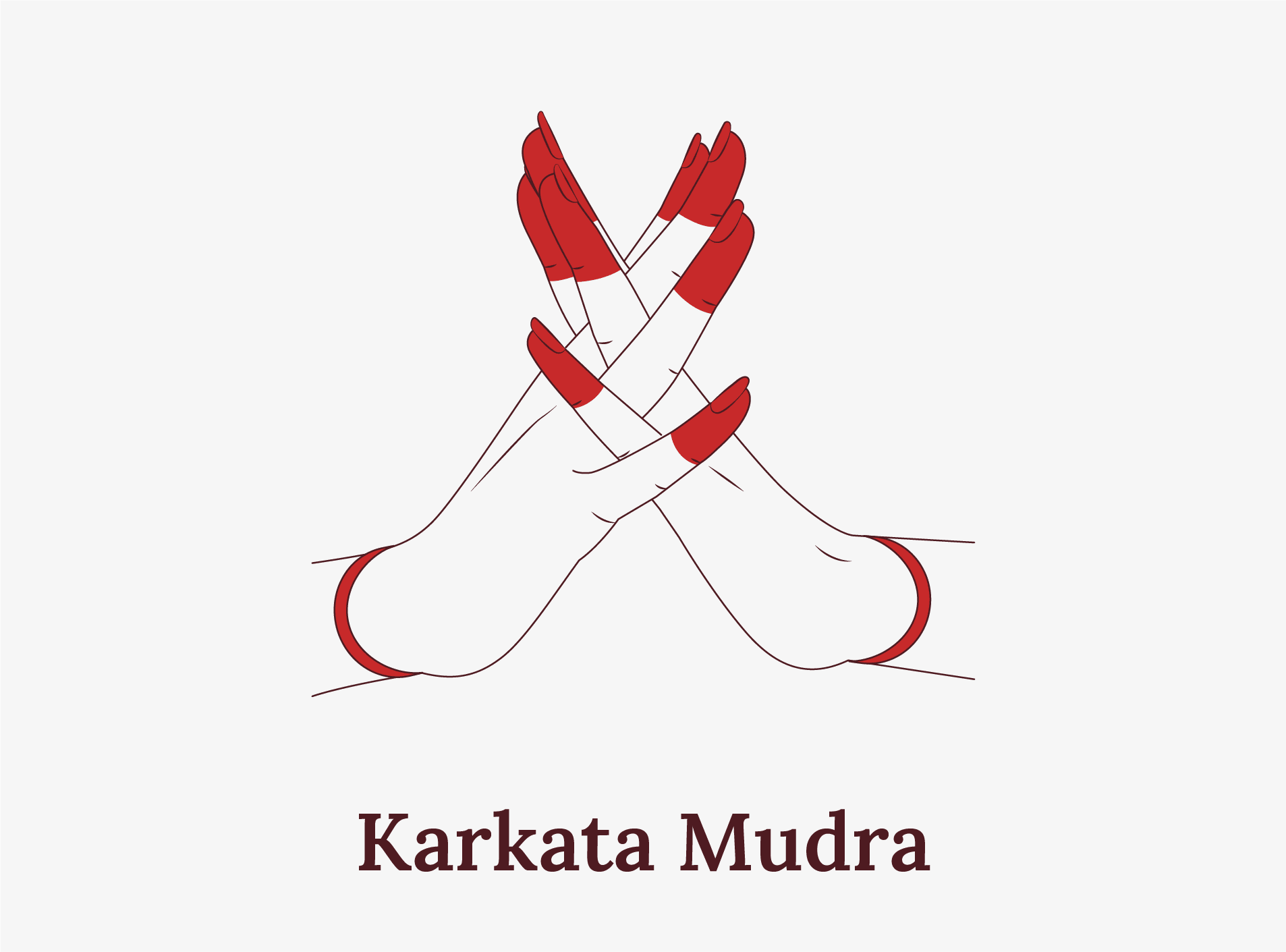 To hold a Karkata mudra, you will have to interlock both hands' fingers with one another. It portrays blowing the Shankh or the conch. It can also be used to depict the bending of a branch, stretching and twisting of the limbs, and the arrival of people.
To hold a Karkata mudra, you will have to interlock both hands' fingers with one another. It portrays blowing the Shankh or the conch. It can also be used to depict the bending of a branch, stretching and twisting of the limbs, and the arrival of people.
11. Swastika Mudra
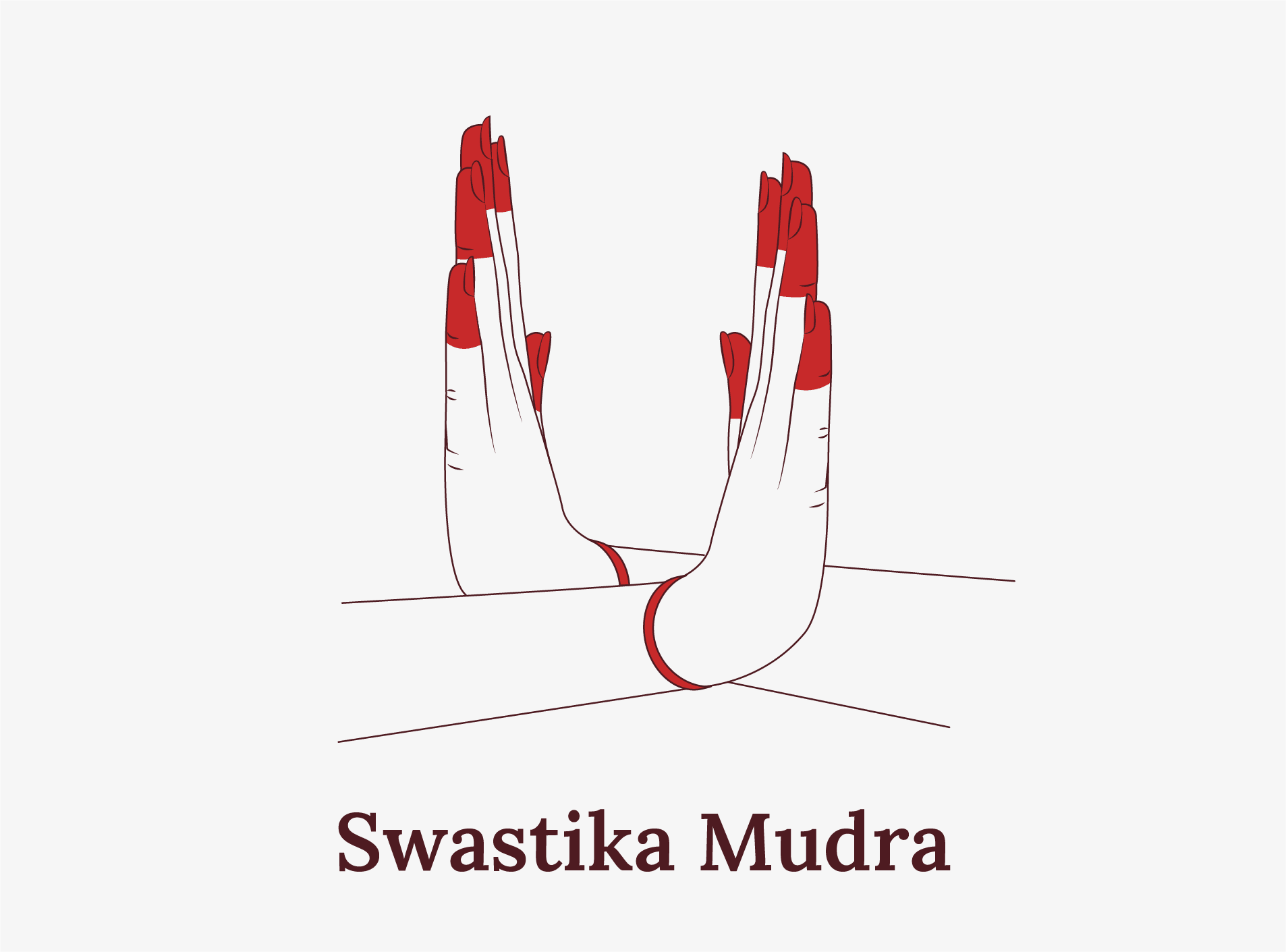 This mudra is another important double-hand Bharatanatyam mudra used extensively in this particular dance style. It depicts denial, imprisonment, a blocked passage or road, and also a crocodile.
This mudra is another important double-hand Bharatanatyam mudra used extensively in this particular dance style. It depicts denial, imprisonment, a blocked passage or road, and also a crocodile.
12. Pushpaputa Mudra
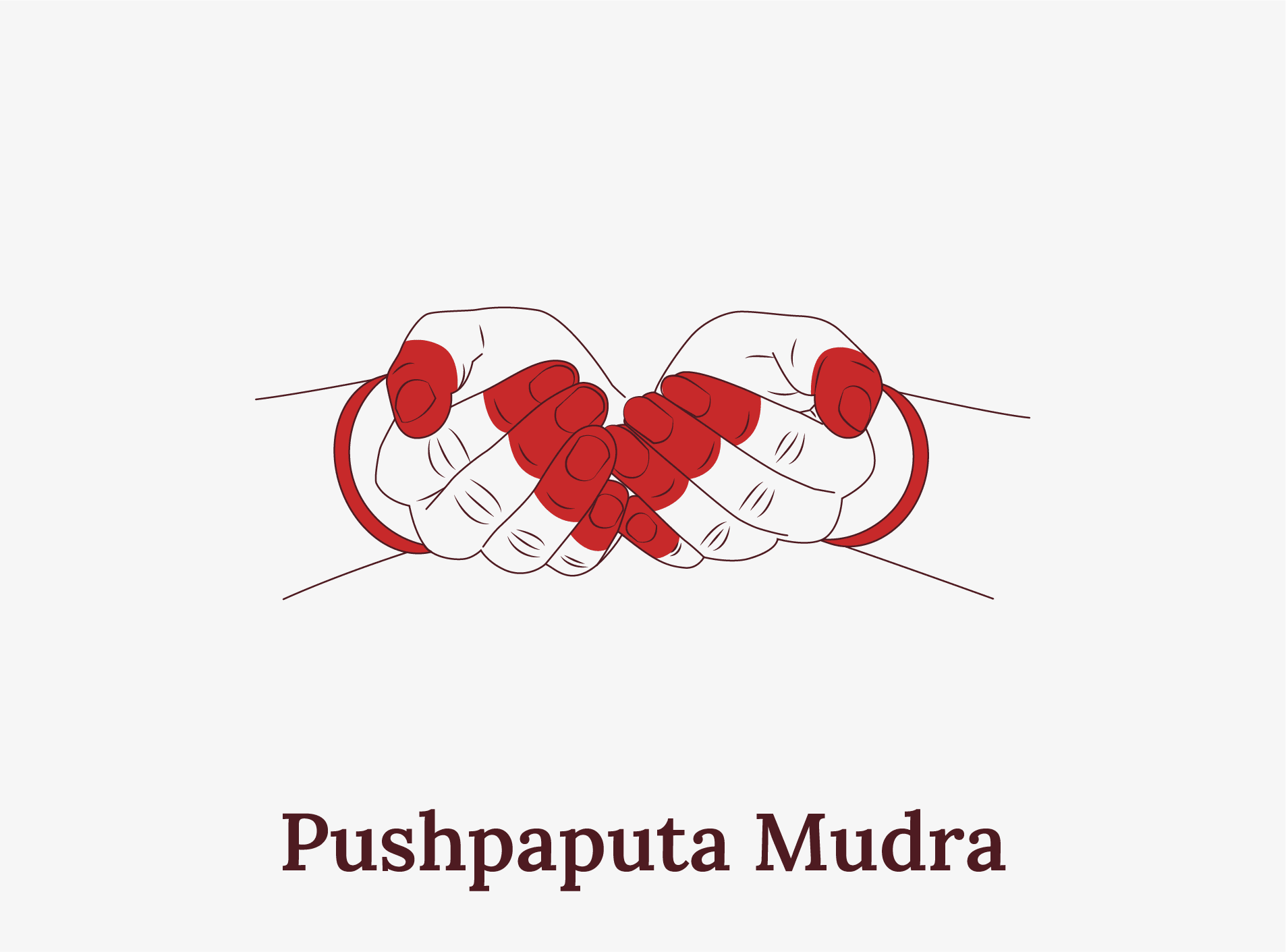 In order to form a Pushpaputa mudra, you need to join your hands by bringing the little fingers together. The palms are slightly hollow. The mudra exhibits an open mind and soul. It also portrays the action of making an offering, usually to the almighty. Indicate waving of lights to Gods. The mudra also depicts giving away a floral tribute during a Puja, especially during the recital of Mantras.
In order to form a Pushpaputa mudra, you need to join your hands by bringing the little fingers together. The palms are slightly hollow. The mudra exhibits an open mind and soul. It also portrays the action of making an offering, usually to the almighty. Indicate waving of lights to Gods. The mudra also depicts giving away a floral tribute during a Puja, especially during the recital of Mantras.
13. Utsanga Mudra
 It is another graceful mudra where your right palm will touch your left shoulder, and your left palm will be placed on your right shoulder. You need to hold Mrigashirsha mudra on each of your hands to hit top-notch perfection. The mudra reflects shyness and modesty or an embrace. It also displays ornaments and armlets.
It is another graceful mudra where your right palm will touch your left shoulder, and your left palm will be placed on your right shoulder. You need to hold Mrigashirsha mudra on each of your hands to hit top-notch perfection. The mudra reflects shyness and modesty or an embrace. It also displays ornaments and armlets.
Wrapping Up!
Bharatanatyam like any other Indian classical art form has been thriving as an oral tradition. This means that different schools and styles of dance may use different hand gestures and different terms for the same hand gestures. The main purpose of executing a mudra is to communicate and the mode of this communication is a beautiful blend of technicality and aestheticize.
Whether you are a beginner looking forward to starting your Bharatanatyam journey from scratch or in the middle of your learning journey, on ipassio you can find a mentor who can customize your online Bharatanatyam classes as per your learning needs.


